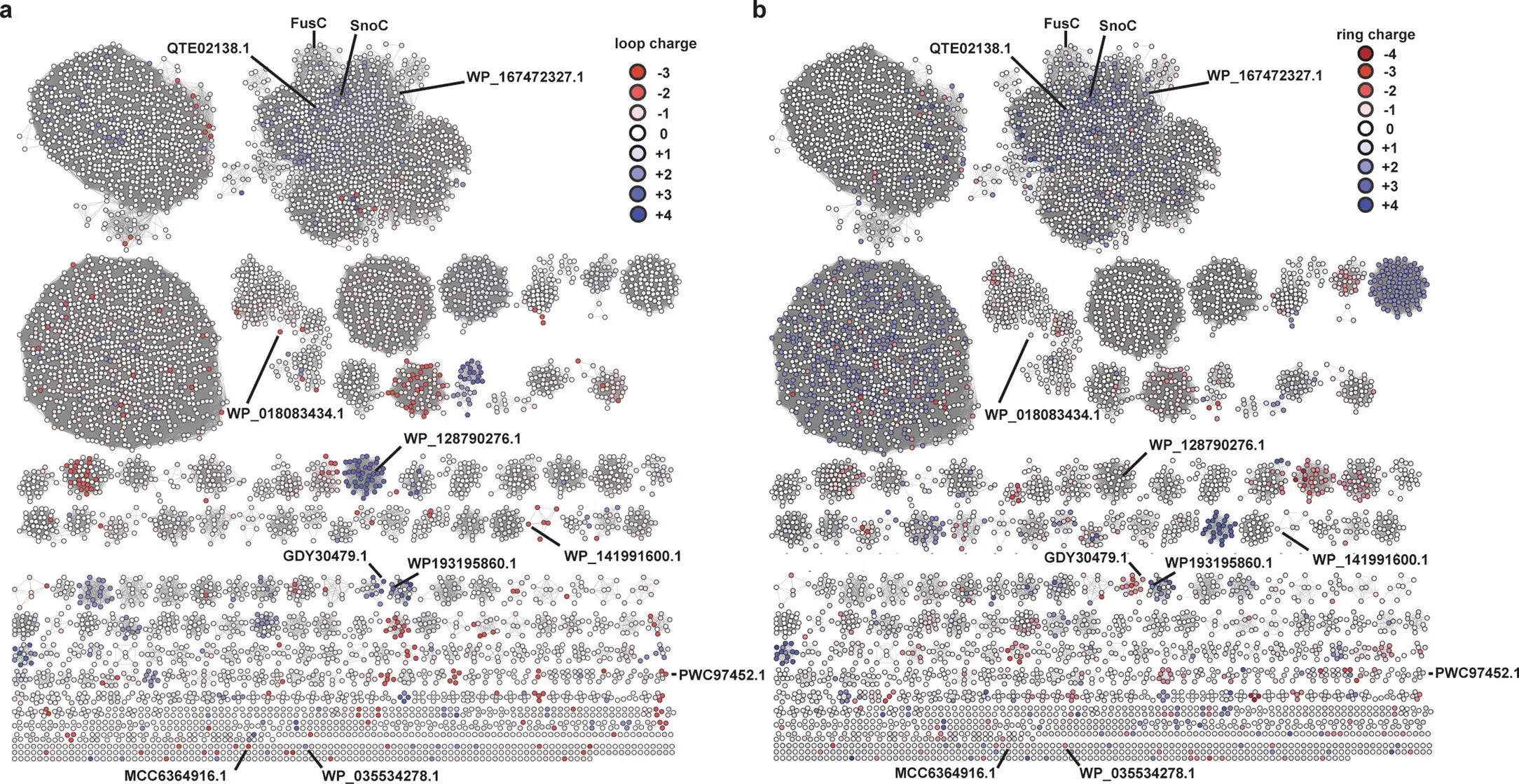Lasso peptides represent a fascinating class of natural products synthesized by specific bacterial strains. Distinguished by their unique lasso-like configuration, these peptides possess a remarkable resilience against harsh environmental conditions, making them of immense interest in therapeutic development. Recent research published in *Nature Chemical Biology* has shed light on the structural mechanics behind these peptides, revealing how this understanding could catalyze the development of new peptide-based pharmaceuticals. The intricate design of lasso peptides not only raises questions about their natural role but also offers exciting avenues for medical innovation.
Qualitatively, lasso peptides can be envisioned as linear chains of amino acids that are intricately knotted, resembling a slipknot. This unique structure is not merely an aesthetic feature; it contributes significantly to their stability and potential utility in therapy. As Susanna Barrett, a graduate researcher, notes, the remarkable properties of lasso peptides, such as antibacterial, antiviral, and anticancer capabilities, position them as promising candidates in the pharmaceutical field. Their formation is a two-step enzymatic process that shifts from a linear precursor form to their complex ‘lasso’ shape through the action of two key enzymes: a peptidase and a cyclase.
Despite their potential benefits, a pivotal challenge has been elucidating how the cyclase enzymes facilitate the lassoing process. Historically, scientists have struggled to isolate the necessary enzymes due to their inherent insolubility, complicating efforts to study them comprehensively. The cyclase known as fusilassin cyclase (FusC) exemplifies these difficulties. Characterized in 2019, FusC has since acted as a crucial model, yet its structural details remained elusive. This absence of information hindered deeper insights into the folding and knotting mechanism integral to lasso peptide formation.
Lauded for its prowess in interpreting complex protein structures, artificial intelligence has revolutionized the study of lasso peptides. In the latest study, researchers leveraged the capabilities of AlphaFold to predict the 3D conformation of the FusC enzyme. By integrating other AI-driven tools, such as RODEO, researchers identified key residues within the cyclase active site that engage with the lasso peptide substrate. The use of these AI frameworks allowed for unprecedented advancement in understanding the interactions at play during the folding process, culminating in the revelation of critical amino acids involved in cyclase activity.
Enhancing their research further, the team employed molecular dynamics simulations to visualize the interactions between the lasso peptides and the cyclase with remarkable precision. The compute-intensive Folding@home platform facilitated extensive simulation data collection, yielding insights into fundamental biophysical interactions at an atomic level that were previously unavailable. Through these simulations, the researchers highlighted a specific region termed the backwall of the cyclase active site as crucial for correct peptide folding, pinpointing this to the helix 11 region of FusC.
Transitioning from theoretical frameworks to actual biochemical applications, the researchers pioneered cell-free biosynthesis techniques. By specific manipulation of FusC through mutative alterations in helix 11, they successfully created new versions of the enzyme capable of producing lasso peptides that the original enzyme could not synthesize. This groundbreaking confirmation of their computational models bolsters the understanding of how these peptides fold and has implications for future engineering endeavors.
The interdisciplinary nature of this research, stemming from a collaboration with the San Diego-based firm Lassogen, underscores the broader impact of such scientific pursuits. By engineering alternative cyclases, such as McjC, the research group successfully demonstrated the generation of potent lasso peptide inhibitors with therapeutic efficacy against cancer-promoting integrins. This innovative approach to peptide engineering signifies a vital strategy for expanding the therapeutic arsenal against various diseases.
In sum, the innovative study of lasso peptides heralds a new era in therapeutic developments. It showcases the significant role of artificial intelligence and interdisciplinary collaboration in scientific research. As the mechanisms underlying lasso peptides continue to be unveiled, their potential as versatile pharmacological agents will become increasingly apparent, offering hope for advanced treatment options across diverse medical landscapes. The interplay between computational modeling, empirical research, and biological engineering sets a transformative example for future endeavors in peptide therapeutics.


Leave a Reply